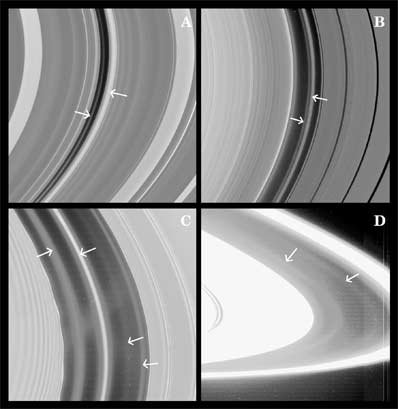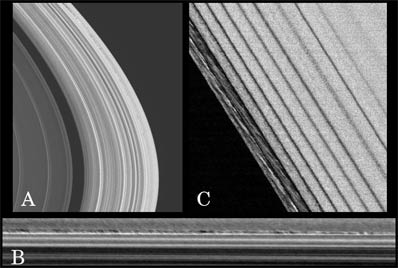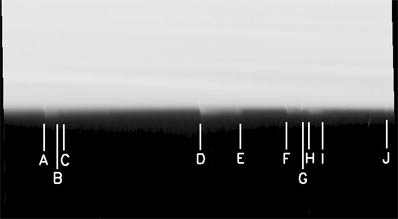
Spaceflight Now +

|

|

|

|

Premium video content for our Spaceflight Now Plus subscribers.

Shuttle testing
 Testing to support the space shuttle return to flight is being performed at NASA's Ames Research Center. This footage shows wind tunnel testing using a shuttle mockup and thermal protection system tests in the arc jet facility. (5min 02sec file) Testing to support the space shuttle return to flight is being performed at NASA's Ames Research Center. This footage shows wind tunnel testing using a shuttle mockup and thermal protection system tests in the arc jet facility. (5min 02sec file)
 Play video Play video

History flashback
 In this video clip from the archives, a Lockheed Titan 4A rocket blasts off from Cape Canaveral on February 7, 1994 carrying the U.S. Air Force's first Milstar communications satellite. (6min 17sec file) In this video clip from the archives, a Lockheed Titan 4A rocket blasts off from Cape Canaveral on February 7, 1994 carrying the U.S. Air Force's first Milstar communications satellite. (6min 17sec file)
 Play video Play video

Titan 4A rocket
 The mobile service tower is retracted to expose the massive Titan 4A-Centaur rocket during the final hours of the countdown in 1994. Aerial video shot from a helicopter shows the booster standing on its Cape launch pad. (3min 06sec file) The mobile service tower is retracted to expose the massive Titan 4A-Centaur rocket during the final hours of the countdown in 1994. Aerial video shot from a helicopter shows the booster standing on its Cape launch pad. (3min 06sec file)
 Play video Play video

NASA budget
 NASA Administrator Sean O'Keefe, in his final press conference appearance, presents the 2006 budget information and answers reporters' questions on Hubble, the exploration plan and shuttle return-to-flight. (86min 37sec file) NASA Administrator Sean O'Keefe, in his final press conference appearance, presents the 2006 budget information and answers reporters' questions on Hubble, the exploration plan and shuttle return-to-flight. (86min 37sec file)
 Play video Play video

Meet the next ISS crew
 Expedition 11 commander Sergei Krikalev, flight engineer John Phillips and Soyuz taxi crewmember Roberto Vittori hold a pre-flight news conference in Houston. Topics included problems with the shuttle safe haven concept. (42min 23sec file) Expedition 11 commander Sergei Krikalev, flight engineer John Phillips and Soyuz taxi crewmember Roberto Vittori hold a pre-flight news conference in Houston. Topics included problems with the shuttle safe haven concept. (42min 23sec file)

 Play video: Play video:
Dial-up | Broadband

 Download audio: Download audio:
For iPod

Day of Remembrance
 NASA pays tribute to those lost while furthering the cause of exploration, including the Apollo 1, Challenger and Columbia crews, during this Day of Remembrance memorial from agency headquarters on Jan. 27. (38min 58sec file) NASA pays tribute to those lost while furthering the cause of exploration, including the Apollo 1, Challenger and Columbia crews, during this Day of Remembrance memorial from agency headquarters on Jan. 27. (38min 58sec file)

 Play video: Play video:
Dial-up | Broadband

 Download audio: Download audio:
For iPod

Spacewalk highlights
 The Expedition 10 conducts a successful spacewalk outside the International Space Station to mount a German robotic arm and Russian science package to the Zvezda service module's exterior. (5min 07sec file) The Expedition 10 conducts a successful spacewalk outside the International Space Station to mount a German robotic arm and Russian science package to the Zvezda service module's exterior. (5min 07sec file)
 Play video Play video

Huygens science update
 One week after the Huygens probe landed on Saturn's moon Titan, scientists hold a news conference to announce additional results and describe more pictures from the mission. (69min 02sec file) One week after the Huygens probe landed on Saturn's moon Titan, scientists hold a news conference to announce additional results and describe more pictures from the mission. (69min 02sec file)

 Play video: Play video:
Dial-up | Broadband

 Become a subscriber Become a subscriber
 More video More video

|

|

|

|
|

|

Cassini finds treasures among Saturn's rings, moons
CASSINI NEWS RELEASE
Posted: February 24, 2005
The high porosity of Saturn's innermost small moons, tenuous ringlets discovered in some of the gaps in its rings, the variation in ring particle composition across the rings, and new ring structures which indicate more clearly than ever the transient clumping and aggregation of particles as they orbit Saturn are among the discoveries being reported today in the journal Science by the Cassini Imaging Science team.

Cassini images have revealed the presence of previously unseen faint rings in some of the gaps in Saturn's rings -- possible indicators of small yet-unseen moons. Credit: NASA/JPL/Space Science Institute
Download larger image version here
|
The Cassini imaging scientists have spent the last year analyzing images acquired by the Saturn orbiter's camera system beginning last February, when routine imaging of Saturn and its rings and moons began. This collection includes the most detailed images ever collected, taken immediately after the Saturn orbit insertion maneuver, when the spacecraft Cassini flew closer to the rings than any previous spacecraft. This treasure trove of data has yielded surprising results which will, with further study, improve scientists' understanding of how Saturn's rings actually work.
Ring features never before observed have been found in many of the images. Weak, linear density waves excited in the rings by the small moons, Atlas and Pan, have been examined and have yielded satellite masses more reliable than previous measures. These new masses imply that Atlas and Pan are very porous - perhaps constructed like rubble-piles - and similar in this regard to the other moons orbiting just outside Saturn's rings, such as the moons that shepherd the F ring, Prometheus and Pandora. These low densities suggest that all the close-in satellites have been gravitationally pulled together out of smaller bits and pieces.
The examination of these same linear density waves, which lie in the Cassini division in Saturn's rings, indicates that this rarefied region of the rings, like Saturn's C ring, is populated with particles which are on average smaller than particles in the A and B rings, two major rings lying on either side of the Cassini division. The Cassini division material seems also to be vertically thinner - only several meters (yards) - than the A or B rings. Other features, like 'rope-like', 10-kilometer (6-mile) scale structures found in the outer edge of the Encke gap, and splotchy, 30-kilometer (20-mile) scale structures seen near the edge of the A ring, are the newly-found evidence of transient particle clumping - a finding that is key to understanding in full the behavior of particles under the influence of Saturn, orbiting moons and other nearby particles.

A collection of new ring phenomena, first observed in the sequence of images taken of the dark side of Saturn's rings immediately after Cassini entered orbit, may be evidence of the clumping and aggregation of ring particles. This phenomena is caused by the combined gravitational effects of Saturn, orbiting moons, and other ring particles. Credit: NASA/JPL/Space Science Institute
Download larger image version here
|
Circumstantial evidence, in the form of spike-like features in the outer edge of the narrow Keeler gap in Saturn's A ring, is also presented today that a tiny moon is likely to be found eventually orbiting dead center in this gap. Imaging sequences have been planned to scour the gaps in Saturn's rings for new moons. Imaging scientists expect that eventually, they will find the moon hidden in the Keeler gap.
Several new faint rings have been sighted in Cassini images. One of these, reported earlier, populates the same orbit as the small moon Atlas; others lie in various gaps in the rings and may indicate the presence of tiny embedded moons coincident with them or acting as shepherds nearby. All of these saturnian diffuse rings are either comparable to the jovian ring or more robust. Several of them are spatially variable or kinked, likely evidence of the perturbations of nearby moons.
Saturn's rings are primarily composed of water ice. But recently analyzed multi-color images taken on approach to Saturn suggest more strongly than ever that the amounts of rocky or organic contaminants in the rings is often quite different in neighboring parts of the ring system.
Finally, the new findings include refinements in the orbits of several of Saturn's small satellites, some of them discovered by Cassini and reported earlier. One especially intriguing result is the eccentric and slightly inclined configuration of the orbit of the moon, Pan, which maintains the Encke gap in Saturn's A ring. Until Cassini reached Saturn, it wasn't clear if this moon's orbit would be circular or eccentric. The shape is significant as it indicates the type of interaction the moon has with the ring material surrounding it. If Pan's orbit can be kept eccentric by this interaction, then planets growing in a disk of material surrounding a star may also have eccentric orbits - a conclusion that may help explain the eccentric orbits of planets being discovered today orbiting other stars in our galaxy.

Images taken of Saturn's rings by Cassini immediately after it entered orbit around Saturn have turned up circumstantial evidence that an unseen moon may be orbiting dead center in the narrow Keeler gap in Saturn's outer A ring. Credit: NASA/JPL/Space Science Institute
Download larger image version here
|
Another reported finding is the observation that the tiny, 5 kilometer (3 mile) -wide moon of Saturn, S/2004 S5 (recently named Polydeuces), discovered by the imaging team and reported late last year, is in fact a Trojan moon of Dione. Saturn is the only planet known to have moons with smaller companion 'Trojan' moons. Trojan moons are those found near stable 'Lagrange points', situated 60 degrees ahead or behind a larger moon in its orbit around a planet. Helene is a previously-known 32-kilometer (20-mile) sized Trojan which orbits ahead of Dione, usually within 15 degrees of the leading Lagrange point; newly-discovered Polydeuces can stray by as much as 32 degrees from Dione's trailing Lagrange point. Dione is not alone in possessing Trojan moons - Tethys, another of Saturn's moons also has a Trojan near each of its stable Lagrange points. However, the wandering exhibited by Polydeuces is the largest so far detected of any Trojan moon.
The Cassini-Huygens mission is a cooperative project of NASA, the European Space Agency and the Italian Space Agency. The Jet Propulsion Laboratory, a division of the California Institute of Technology in Pasadena, manages the Cassini-Huygens mission for NASA's Science Mission Directorate, Washington, D.C. The Cassini orbiter and its two onboard cameras were designed, developed and assembled at JPL. The imaging team is based at the Space Science Institute, Boulder, Colo.
|

|

|

|
|



